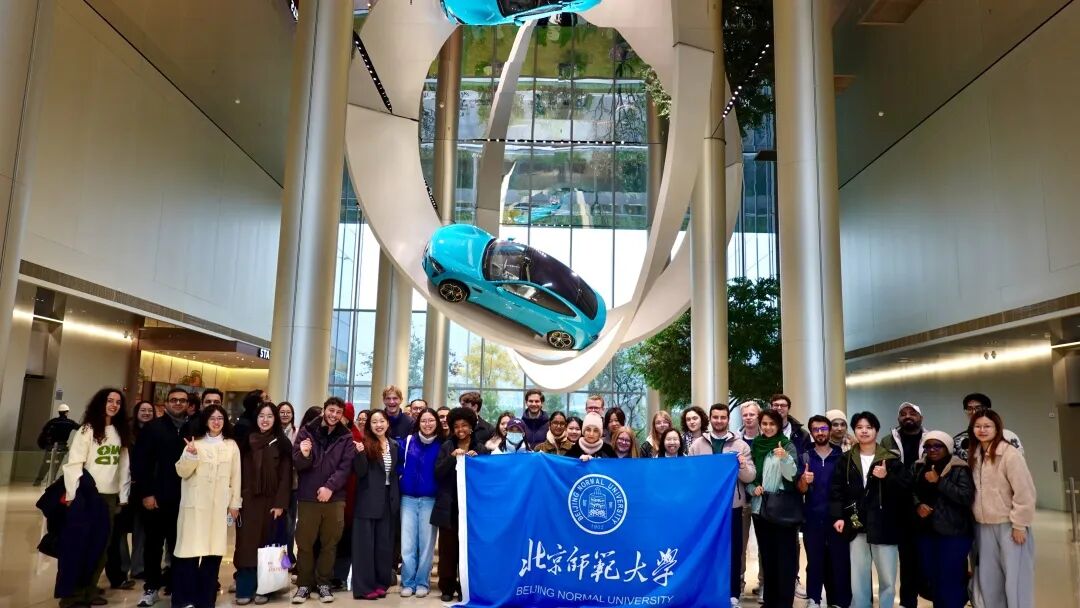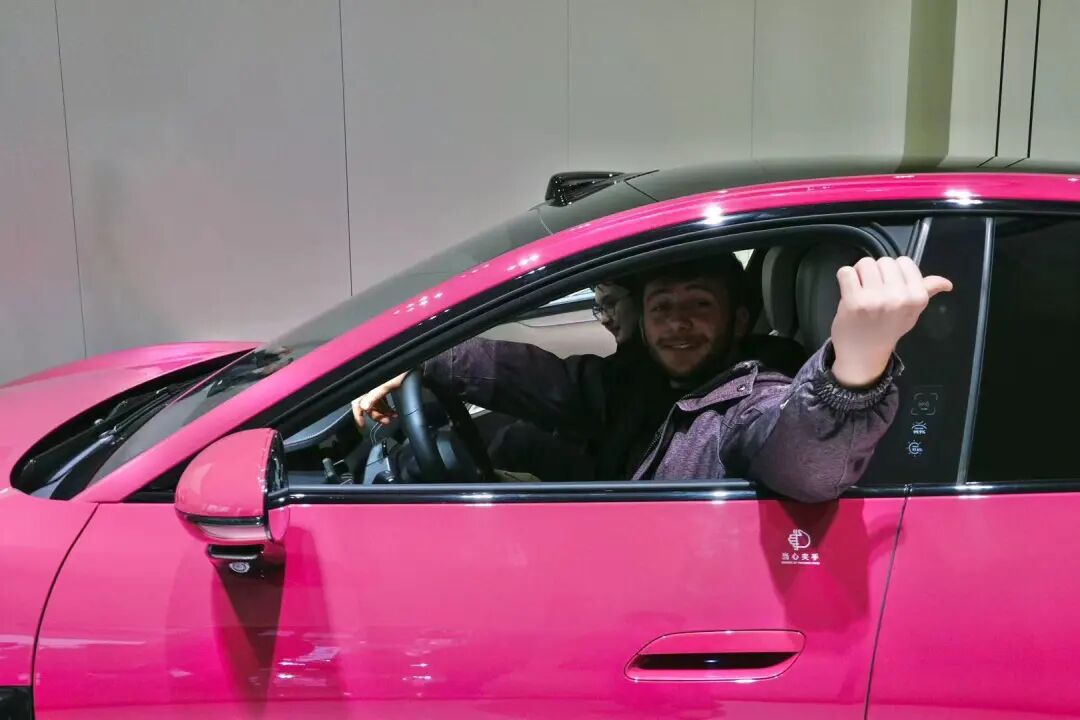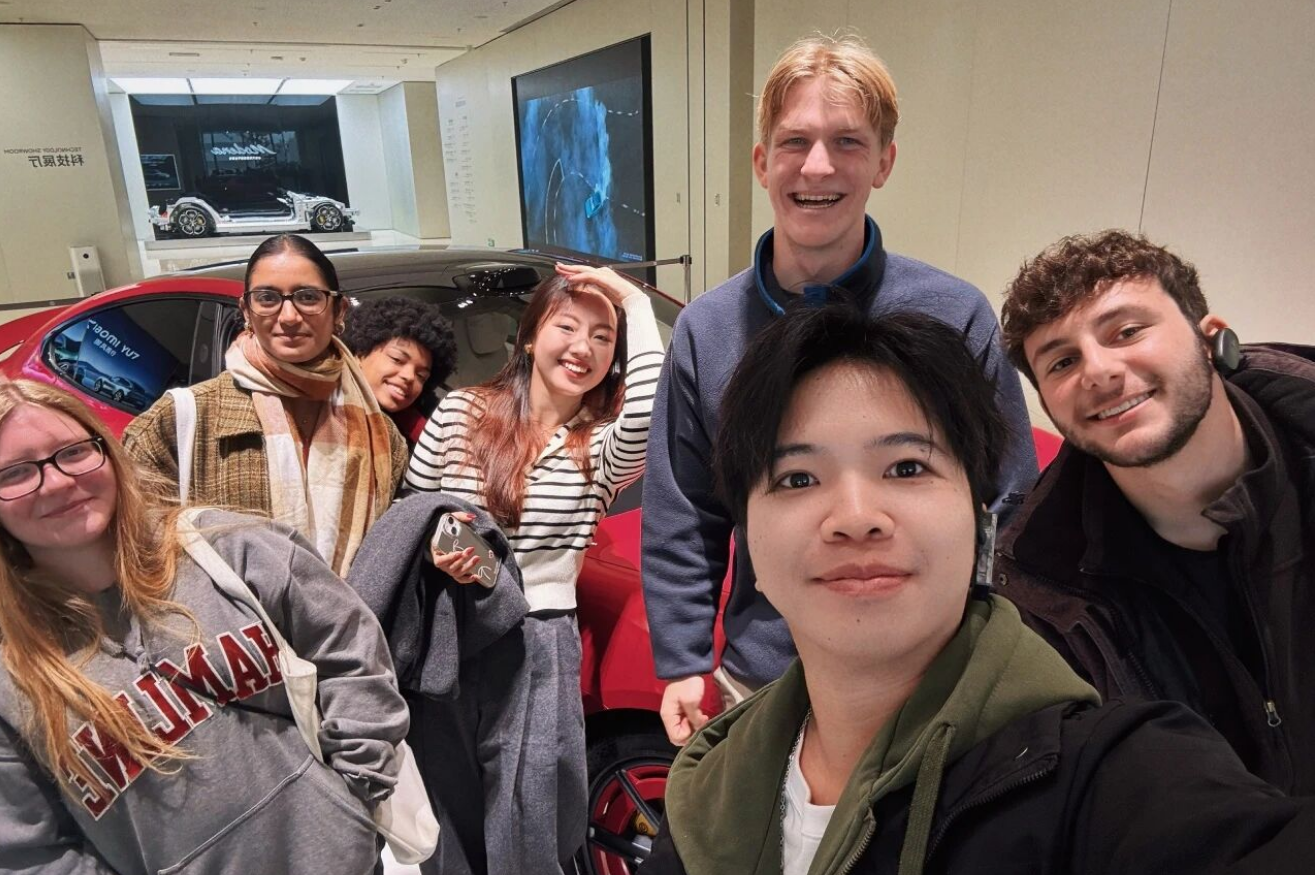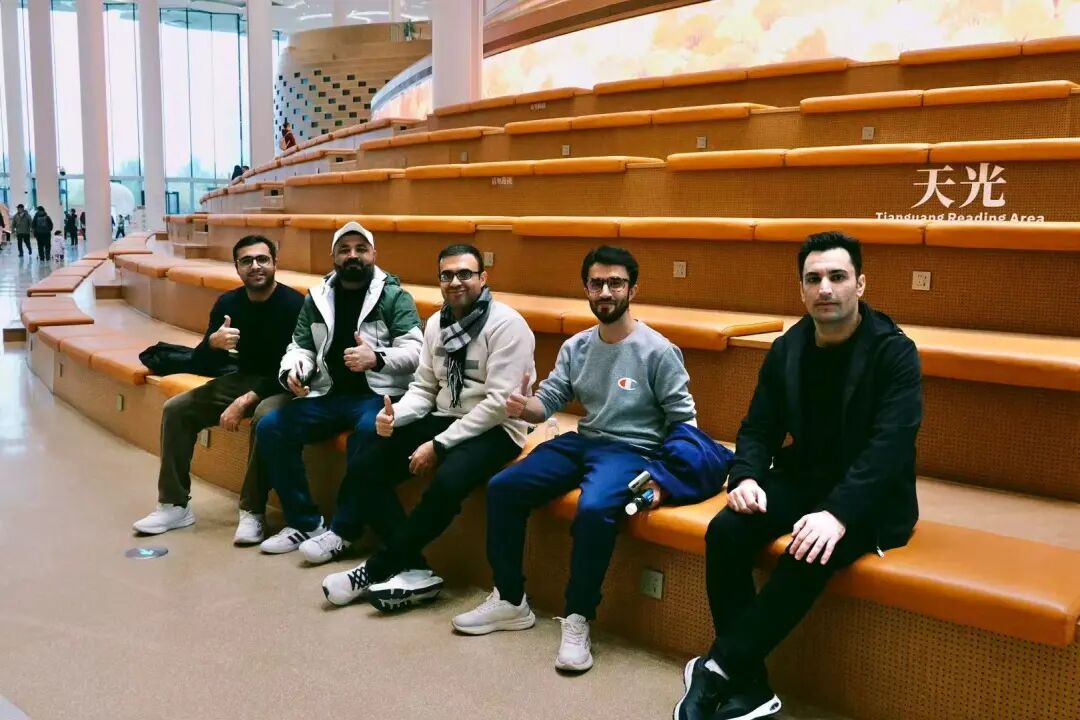BNU International Students Visited the Xiaomi Automobile Super Factory and the Three Landmark Buildings in Beijing's Sub-Center
As autumn deepens, the pursuit of knowledge flourishes. On October 30, the Office of International Exchange and Cooperation at Beijing Normal University organized a practical research activity under the theme “Experiencing Technological Beijing, Exploring the Pulse of the City.” International students from various countries visited the Xiaomi Automobile Super Factory and the three landmark buildings in Beijing’s Sub-Center, gaining firsthand insight into the speed and precision of China’s intelligent manufacturing while appreciating the modern landscape of the city’s sub-center. This journey, blending technology with culture and tradition with innovation, offered international students a vivid and immersive experience of China beyond the classroom.
Guided by professional instructors, the international students first visited the automobile showroom. The futuristic Xiaomi new energy vehicles—especially the much-anticipated YU7 model—elicited waves of admiration from the students. They observed the intricate design and intelligent cockpit of the vehicles up close, and some even had the chance to get inside and experience firsthand the seamless integration of Xiaomi’s “Human–Vehicle–Home” smart ecosystem.





Next, the teachers and students took a shuttle bus deep into Xiaomi’s core production workshops, including casting, stamping, and body assembly. The scenes before them were truly breathtaking: hundreds of robotic arms operated in perfect synchronization, while automated AGV vehicles moved tirelessly across the floor. From individual components to a fully assembled car rolling off the line, the entire process could take as little as 76 seconds. With a 100% automation rate, the intelligent production line transformed the concept of “Made with China’s Intelligence” into a vivid, tangible reality—leaving the international students in awe of the remarkable efficiency and precision of modern technology.
As a new landmark of industrial tourism in Beijing, the Xiaomi Automobile Factory has attracted countless visitors from both China and abroad with its highly automated production lines and cutting-edge technological concepts.
International students spent their time strolling along the canal, capturing with their cameras the harmonious blend of architecture and nature, or immersing themselves in the modern urban atmosphere that defines this vibrant area.

The “Three Landmark Buildings of Beijing’s Sub-Center” refer to the Beijing Performing Arts Center, the Beijing City Library, and the Beijing Grand Canal Museum. Located in the core scenic area of the city’s sub-center, these three modern structures stand gracefully along the canal. With their distinctive architectural designs, they have become new landmarks of Tongzhou, symbolizing Beijing’s forward-looking vision for urban planning and development.

From the highly automated “factory of the future” in the morning to the architecturally inspiring “urban living room” in the afternoon, the international students witnessed, through this seamless transition, the dynamic and inclusive spirit of Beijing—a city that harmoniously blends its thousand-year heritage with a relentless drive toward progress.
This visit was not only an eye-opening experience in technology and culture but also a vivid “classroom on the move.” It allowed the students to step beyond campus, engage closely with China’s thriving innovation, and witness the rapid evolution of Beijing’s urban landscape. Such a unique experience deepened their understanding of “Made with China’s Intelligence” and modern Beijing, leaving a lasting impression on their study journey in China.
The Office of International Exchange and Cooperation at Beijing Normal University will continue to organize diverse and enriching cultural activities, helping international students better understand and integrate into China, and fostering their role as friendly ambassadors of cross-cultural exchange.


